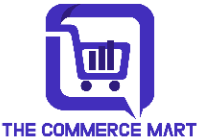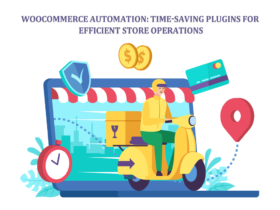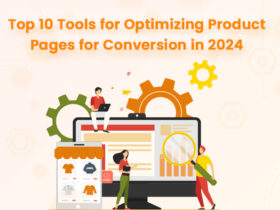As a business owner in the ecommerce industry, it’s no secret that marketing plays a vital role in expanding your business. However, with an abundance of marketing strategies at your disposal, it can be daunting to determine where to begin. Fear not! In this article, I’ll provide you with valuable insights and effective best practices for ecommerce marketing success. This includes defining your target audience, crafting a captivating brand narrative, leveraging social media advertising tactics, implementing compelling email marketing campaigns, optimizing product pages for SEO purposes, utilizing influencer marketing strategies, launching retargeting campaigns and utilizing analytics to track performance.
Define Your Target Audience
The definition of your target audience is one of the most fundamental things a business owner can do when operating an online store. Effective marketing campaigns will be difficult without an obvious understanding of the customer you want to attract. You can start with collecting information about current customers such as age, gender, location, and interests. For the purpose of gaining more information on their buying behavior and motivations, you can also run surveys or focus groups.
You can adapt your marketing efforts to achieve more effective results when you have a clear concept of the target audience. For example, you can focus your social media advertising efforts on Instagram, which is popular with this demographic and has a strong focus on visual content, if your target audience is young adults interested in sustainable fashion.
Create a Compelling Brand Story
Crafting a brand story that sets you apart from competitors and resonates with your target audience is crucial for any business. Your brand story defines who you are as a company and communicates your unique value proposition. To create a compelling brand story, start by defining your mission, vision, and values. Consider what inspired you to launch your business and what goals you aim to achieve.
Once you clearly understand your brand story, weave it into all aspects of your marketing efforts. Incorporate it into social media posts, email campaigns, product descriptions, and any other channels you use to promote your business. Consistently communicating this central theme across all channels will help establish an emotional connection with potential customers and set yourself apart in the market.
Utilize Social Media Advertising
An important tool for online merchants to reach their target audience is social media advertising. Advanced targeting capabilities allow you to target certain demographics, interests and behaviors within social media platforms such as Facebook, Instagram, or Twitter. Start by specifying your objectives and selecting the platforms that will be of greatest interest to your target audience to get maximum benefit from your Social Media Advertising efforts.
Once you’ve chosen your platforms, create compelling ad copy and visual content that speaks directly to your target audience. Consider running split tests to determine which ad variations perform best. And be sure to track your performance regularly to make adjustments as needed.
Develop Email Marketing Campaigns
To maintain contacts with existing customers and generate repeat sales, email marketing is an efficient way of doing so. Starting with the segmentation of your email list using customer behavior, interests and demographic information will give you a solid foundation to create effective email marketing campaigns. This allows you to create highly targeted campaigns that speak directly to your customers’ needs and interests.
When creating your email campaigns, be sure to include compelling subject lines and visually appealing designs. Personalize your emails whenever possible, and include calls to action that encourage your customers to engage with your brand.
Optimize Your Product Pages for SEO
Search engine optimization (SEO) is a critical aspect of ecommerce marketing. It is possible to improve your search engine ranking and gain more inbound traffic to your site with the optimization of the website’s product pages targeted at specific keywords. To optimize your product pages for SEO, start by conducting keyword research to identify relevant search terms. Then, incorporate those keywords into your product titles, descriptions, and Meta tags.
It’s also important to ensure that you have an excellent user-friendliness and ease of navigation on your website, in addition to optimizing content based on keywords. Consider updating the load time of your Website’s pages and responsiveness on Mobile, both factors that may have an impact on search engine rankings.
Leverage Influencer Marketing
Influencer marketing is a growing trend in ecommerce marketing, and for a good reason. By partnering with influencers in your industry, you can reach a broader audience and tap into their trusted relationship with their followers. To leverage influencer marketing, identify influencers in your industry who are aligned with your brand’s values and have a following which is similar to the target audience.
Contact them and propose a partnership that benefits both parties once you have identified potential influencers. This might involve sending them free products in exchange for a social media post or paying them for sponsored content. Be sure to track your performance carefully to determine the ROI of your influencer marketing efforts.
Implement Retargeting Campaigns
Targeted campaigns are an efficient way of reaching customers who have been in touch with your brand but haven’t chosen to buy. By using cookies to track website visitors, you can show them targeted ads on other websites or social media platforms. That way, customers will be encouraged to return to your Website and make a purchase.
When implementing retargeting campaigns, be sure to segment your audience based on their behavior on your website. For example, you might target customers who have abandoned their shopping cart or who have browsed specific product categories. This allows you to create highly targeted ads that are more likely to convert.
Use Analytics to Track Performance
Lastly, using analytics to track your ecommerce campaign performance on a constant basis is important. You can make data driven decisions about where to allocate marketing budgets through monitoring metrics such as website traffic, conversion rates and return on investment. This will be able to optimize your marketing effort over time, resulting in better results.
When using analytics, be sure to set clear goals and track progress towards those goals over time. Use A/B testing to determine which variations of your campaigns perform best, and make adjustments accordingly.
Conclusion
In conclusion, ecommerce marketing is an essential aspect of growing your online business. You can create effective marketing campaigns that drive sales and grow your business by defining your target audience, creating a compelling brand story, using social media advertising, developing email marketing campaigns, optimizing your product pages for SEO, leveraging influencer marketing, implementing retargeting campaigns, and using Analytics to track performance. To stay in line with the curve and to be able to meet your goals, you should always remain flexible and adjust marketing efforts as necessary.






Leave a Reply